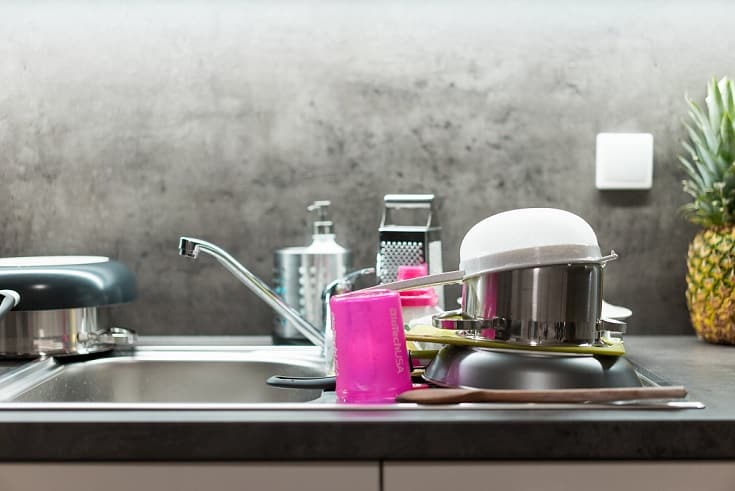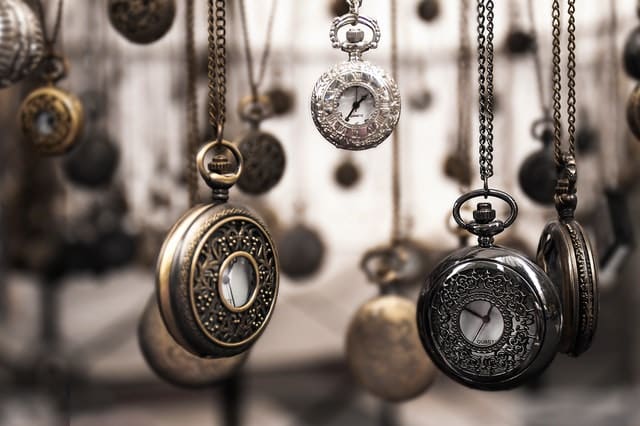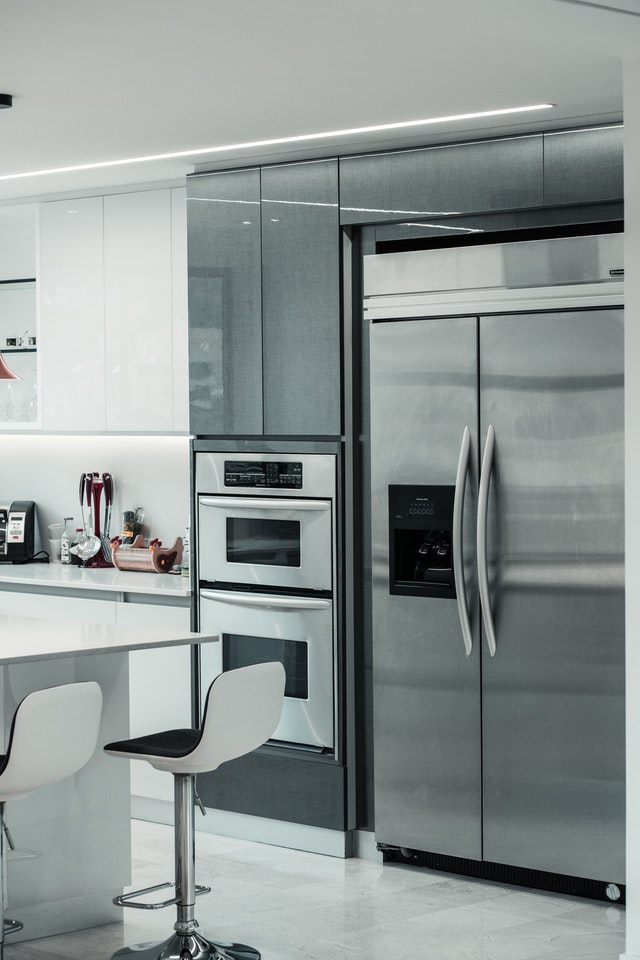Aluminium is a sturdy and long-lasting material that can add a touch of class to any room. And because of its durability, aluminium can be regularly seen in countertops, appliances, and other home fixtures. This lightweight metal always makes for an attractive kitchen accent, transforming outdated interiors into modernized spaces.
While it has many great qualities, aluminium can quickly accumulate dirt and grime which can detract from its sleek appearance. With regularly cleaning, however, you can make your appliances look shiny and new again while ensuring their longevity. Aluminium oxidation can also cause a dull, faded appearance if not cared for properly.
Identify if Your Aluminium is Unfinished
Before cleaning aluminium, you’ll need to determine if it’s covered in a protective coating like lacquer or paint. You should clean coated aluminium in accordance with its coating instead of the metal. For uncoated aluminium, follow our suggestions for cleaning and polishing aluminium.
How to Clean Aluminium – Pots and Pans

Cast aluminium found in your pots and pans can gradually become discolored, having a black or dark grey tint which will require steel wool and a strong arm to remove. They’re also susceptible to limescale build-up, which can be removed through various means. The following steps can help you clean and polish your cookware and other metalic items:
Looking for a professional cleaning service to reinvigorate your home? Work with Calibre Cleaning today!
Step One – Initial Clean
1) Using soapy water, wet the utensil and scrub away dirt and grime. Do not use a scouring pad or anything abrasive.
2) Rinse the utensil with hot water.
Step Two – Make an Acid-Based Solution
1) Squeeze lemon juice into your pot while adding half a cup of vinegar and water to dilute the solution. Remember to wear rubber gloves during this cleaning process.
2) Put your pot on your cooker and heat for ten minutes until your water has boiled.
3) After cooling, place your pot in a sink and use a non-abrasive scrubber to remove stains and clean aluminium.
4) Rinse to wash away soap. To finish, dry and polish aluminium with a flannel cloth.
Boiling your lemon juice and vinegar cleaning solution helps soften dirt and grime that has been caked on. Additionally, it can strip away the oxidized coating on your aluminium, so your cookware doesn’t have that white, chalky appearance.
While you can use commercial cleaners like hydrofluoric acid or bleach to clean your aluminum surface, they can cause corrosion and discolouration over time. Natural ingredients aren’t as harsh and will produce desirable results all the same.
How to Clean Aluminium – Appliances, Bathroom Fixtures and Refrigerators
Brushed aluminium is a finish that’s typically seen in your appliances for its glossy and smooth appearance. While brushed aluminium does contain corrosion-resistant properties, it’s also essential to maintain a regular cleaning schedule to keep your aluminium pieces looking new and shiny.
Step One – Initial Cleaning
1) Dip your cloth into a solution of warm water and dish soap, then wring it out thoroughly.
2) Wipe the solution over your brushed aluminium surface in long, methodical motions. Circular motions will cause dirt to be pushed into the same place.
Step Two – White Vinegar and Water
1) Mix equal parts of white vinegar and hot water into a bucket and soak a soft cloth in the solution.
2) Wring your cloth and wipe your aluminium, this time in a circular motion. This motion is especially effective to remove discolouration.
Step Three – Make a Paste as Your Aluminium Cleaner
1) Mix one tablespoon of cream of tartar and a small amount of warm water to make a paste.
2) Apply your paste to stubborn spots and wait for 10 minutes.
3) Wipe away your paste with a damp, soft cloth.
4) After stains are removed, spray your appliance with a glass cleaner, and buff it to a shine with another microfibre cloth.
How to Clean Aluminium – Kitchen and Bathroom Aluminium Sinks
Sinks, in particular, need to be cleaned regularly to prevent them from looking worn and corroded. After all, they’re exposed to soap scum, hard water, food particles and other things that could affect the appearance of your sink.
Step One – Initial Cleaning
Using a soft nylon pad, scrub your sink with a dish soap and water solution. Doing so will help break off excess dirt and grime without scratching your metal surfaces.
Step Two – Make a Mild Acid Solution
1) Cut a lemon in half and dip it in a plate of salt.
2) Scrub your sink with the exposed lemon half directly on stains and oxidized areas.
3) If needed, repeat the process using your lemon’s other half.
4) Rinse and brush down difficult stains with dish detergent and a brush.
5) If stains are still present, use a mild acid solution of vinegar, water and dish soap to remove them.
Lemon contains acidic properties to help cut through grease while salt provides the necessary abrasion to remove rust from the aluminium. This natural alternative is cheaper than commercial products and is also less caustic.
Cleaning Aluminium – Antiques

For vintage aluminium pieces that are valuable, you may want to consider taking them to a professional cleaner. For DIY cleaners, just remember your antiques are pretty delicate and require a little extra care.
If you happen to drop your metal antique, it might have some dents or scratches that you’ll need to determine before cleaning it. Polishing can conceal most damage, but if it’s too extensive, you might want to consult with a professional to assess the damage before attempting to clean aluminium yourself.
Make Your Acidic Solution as Your Aluminium Cleaner
1) Start by pouring 2 cups of water into a pot, then add 1 cup of white vinegar and four tablespoons of cream of tartar.
2) Place your pot on a stovetop and heat until your mixture boils. Pour into a big container, i.e. a bathtub or sink.
3) Submerge your aluminium piece into the mixture and soak for 10 minutes.
4) Drain your mixture and add warm water with dish soap. Soak for a further 5 minutes.
5) Remove your aluminium item, rinse and wipe with a soft cloth. This will clean blackened areas for a shinier look.
Cleaning Aluminium – Oxidation
Your aluminium’s surface will gradually oxidize and leave a greyish, chalky appearance, giving your appliances a less aesthetically-pleasing colour. However, this oxide layer also acts as a barrier against corrosion and regenerates when exposed to oxygen.
To clean oxidized aluminium, follow these easy steps:
Sep One – Initial Cleaning
Wipe down aluminium with a clean cloth or brush to remove dirt or dust.
Step Two – Make a Dishsoap Solution for Your Aluminium Cleaner
1) Pour water into a container and add dish soap. Mix to create a diluted solution.
2) Dip your cloth or brush into the soap mixture and wipe oxidation from your metal. Wipe or scrub gently so as to not damage and scratch your metal.
3) Wipe away soap residue with a clean, soft cloth or non abrasive scrubbing pad.
4) For remaining oxidation spots, apply aluminium polish with steel wool.
5) Buff aluminium to a shine with another clean cloth or pad. This will help get rid of oxidation residue and give your appliances a vibrant shine.
How to Polish Aluminium?
Everybody wants their aluminium so shiny that it looks like it’s made of glass. If you’re interested in polishing aluminium, there are a few ways to get the job done. After cleaning your aluminium, you can either use general metal polish or try one of these natural methods.
Polish with Cream of Tartar
1) Wear rubber gloves and put a tablespoon of tartar onto a soft cloth. You’ll only need enough to polish smaller, individual areas of your aluminium.
2) Polish stubborn stains in circular motions until all tartar is gone.
3) Buff your aluminium with a clean, flannel cloth to achieve shine.
Cleaning brass instead? Here are some tips on How To Clean Brass
Best Way to Clean Aluminium – An FAQ
What chemical can be considered the best aluminium cleaner?
Hydrochloric acid, also known as muriatic acid, is highly effective in neutralizing aluminium oxidation, which gives the metal a powdery white shade. While acid can clean aluminium, always wear protective eyewear and gloves to prevent damage to skin and eyes. Our experts also recommend testing a small area first before cleaning aluminium in its entirety.
Does coke clean aluminium?
Coke dissolves with metal oxides, stripping away rust to restore your aluminium to it’s original condition. To do so, soak your aluminium in coke overnight and scrub rust with a wire brush.
Does baking soda clean aluminium?
Baking soda is effective in removing grease and dirt from aluminium surfaces. However, it’s important not to leave baking soda on your aluminium cookware for too long, as it can cause oxidation and discolouration. Make sure to rinse them right after.
What is the best chemical to clean aluminium?
The most cost-effective and safest way to clean your aluminium is by using white vinegar or lemon. Both contain acidic properties, which dissolve the organic matter and neutralize it to restore shine.
CalibreCleaning – Restoring Your Home with a Professional Clean
It’s not only your aluminium pots and cutlery that needs a good clean but also your entire home. Our team at CalibreCleaning offers professional cleaning services to eliminate stubborn stains from your kitchen appliances, ovens and more.
For a free onsite estimate or to book a professional cleaner, contact us today! We provide professional services for house cleaning in Adelaide, Brisbane, Canberra, Gold Coast, Hobart, Melbourne, Perth, and Sydney. We also offer End of lease or bond cleaning in Adelaide, Brisbane, Canberra, Gold Coast, Hobart, Melbourne, Perth, and Sydney. If you enjoyed this aluminium cleaning guide, you’ll also enjoy this Top 5 Life Hacks to Help You Keep on Top of Housework
